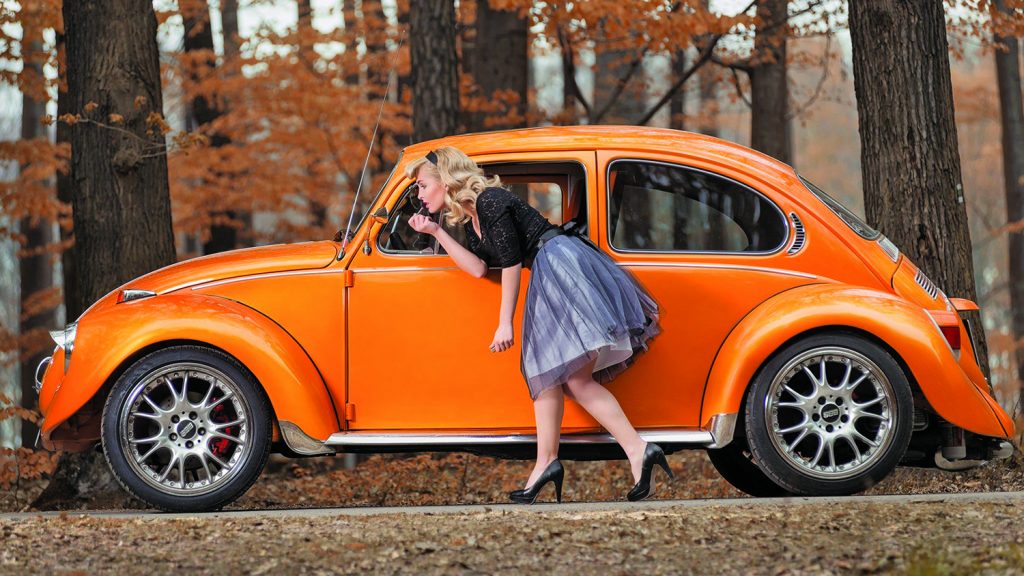A Beetle is a simple machine, originally designed to carry 4 adults at 62 mph. It was never meant to be as successful as it turned out to be! Volkswagen announced that it will end the production of this iconic car in 2019, here is
On September 13, 2018, Volkswagen of Germany announced that it will discontinue its ‘Beetle’ line of cars, the first of which had an in 1938. Ironically, the conceptualisation of this much-loved icon was steered by one of the world’s most hated men- Adolf Hitler. He wanted the Beetle to do for personal transport in Germany what the Ford Model T had done in the US
A car that defied the odds
A car that defied the odds
The car was initially known as Kafer; the German word for ‘beetle’ from which the popular English nickname originates. A spine chassis that links the front to the rear axle and a separate body shell that is bolted down on top. In the rear is a flat 4 air-cooled engine, which powers the rear wheels.
Difficult start
World War 1 left Germany in economic mess, which was made worse by the Stock market crash in the 1920s. When Hitler rose to power in 1933, he ordered the creation of six thousand kilometers of autobahns; a highway system in Germany that usually doesn’t have a speed limit. He envisioned a small car that could sell cheaply and in large numbers. And for that Hitler chose Ferdinand Porsche. The car was the product of Porsche and the consulting specialists such as Austrian Erwin Komenda and Hungarian Bela Barenyri; who published a design identical to the car in the mid-1920s, and is considered as the true father of the car. All the prototype cars were lost during the bombing raid over Stuttgart in 1945.

Journey to America
In 1945 British Army General Ivan Hirst was ordered to take troops and clean up the
World fame
DDB advertising agency was the sling that propelled Beetle into instant world fame. In 1959, the Manhattan advertising agency Doyle Dane Bernbach took on the Beetle’s ad campaign. The men working on the project were Helmut Krone; a celebrated art director, copy writer Julian Koenig and Bernbach. Koenig born in Germany and raised in New York was one of the few Americans who had actually bought a Volkswagen and had an understanding of it. They devised bold, honest advertising including the ‘Think small.’ The advertising doesn’t pretend to be anything but ‘what it is -an honest car.’ The agency made the car’s weakness its strength. Some of their slogans included, ‘lemon’; the most successful, ‘ugly is only skin deep,’ ‘it makes your house look bigger,’ ‘it is ugly, but it gets you there,’ ‘live below your dream’ etc. Beetle became a mainstay of popular culture through the 1960s and 1970s. In 1968 Disney released the first of six movies featuring Herbie the Love Bug; an anthropomorphic 1963 Beetle with racing style number 53 on the hood.

The new beetle
US sales ceased in 1979 but the car continued to be produced in Mexico and Brazil. In
Before the final chapter of this saga, the company said the output would end at its plant in Mexico from July 2019, after production of two celebration models: Final Edition SE and Final Edition SEL that would be available in
Once bitten by beetle bug, you will be smitten forever :Meet the Beetle Owners in your city

Founder-President of Vintage and Classic Car Club Chandigarh, (Retd.) Brig J. S. Phoolka has put the above quote of beetle bug aptly! The Founder Secretary General of this club is a proud beetle owner. Meet Baljit S. Manco, who loves his beetle immensely. “Chandigarh has about 52 beetle cars, I owned four out of them initially but now I have only one. Beetle will still be sold despite
“Government has given special privilege to vintage cars and mentioned that they will be used only as sports cars, in rallies and static shows. They will fall under the heritage category (for the purpose of registration). One may use it on
“The new models are luxury vintage cars but not with a rear engine. The shape too is the same as the old one but it has lost its charm”- the club members explained.
“When I was in
(With inputs from Kajal Chib and Gaurav Goswami)

